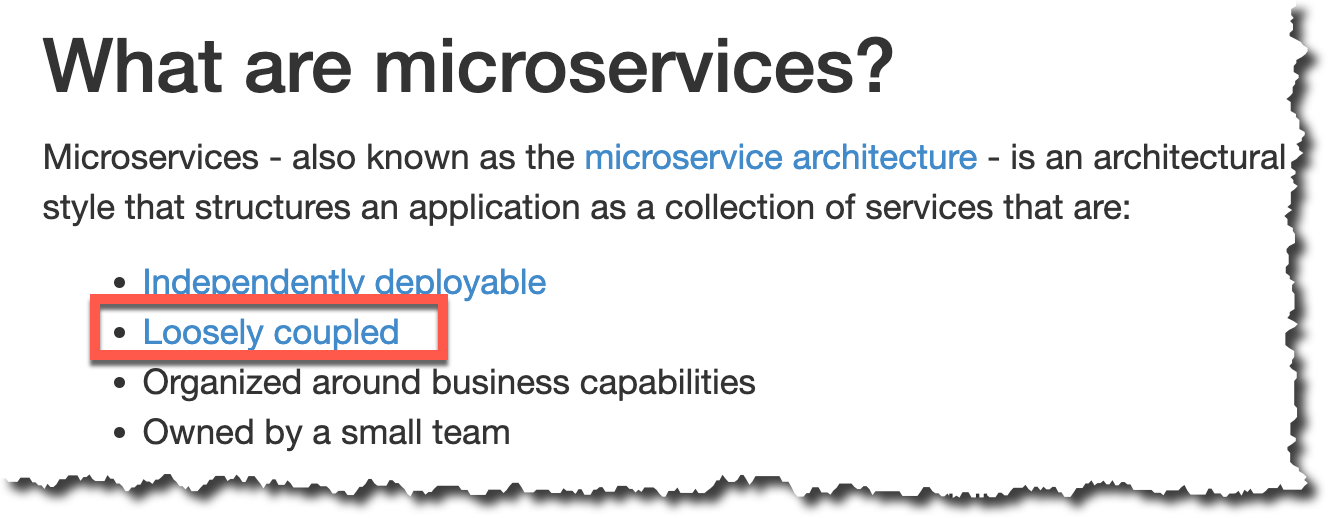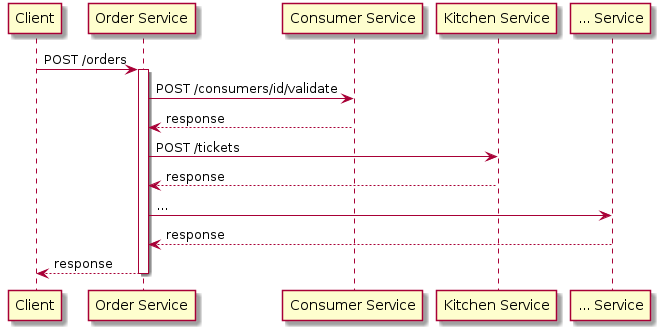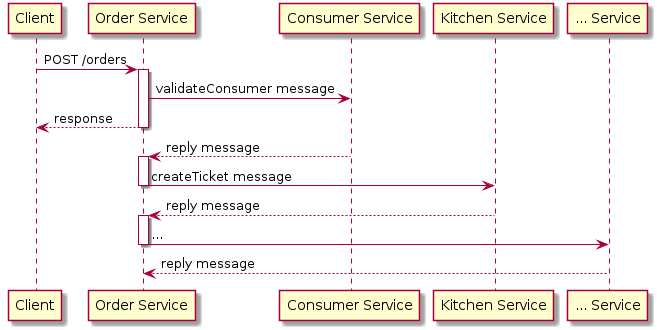Essential characteristics of the microservice architecture: loosely coupled
application architecture loose coupling microservice architectureContact me for information about consulting and training at your company.
The MEAP for Microservices Patterns 2nd edition is now available
Previously, I wrote how one of the essential characteristic of the microservice architecture is that services are independently deployable. Another essential characteristic is that services are loosely coupled.

There’s actually two different types of coupling:
- runtime coupling - influences availability
- design-time coupling - influences development velocity
Minimizing design-time coupling and minimizing runtime coupling are two of the five dark matter forces that shape a microservice architecture.
Let’s look at each type of coupling in turn.
Runtime coupling and availability
Runtime coupling between services is the degree to which the availability of one service is affected by the availability of another service. Or to be more precise, it’s degree to which the availability of an operation implemented by one service is affected by the availability of another service.
Runtime coupling reduces availability
For example, let’s imagine that the createOrder() system operation is implemented by an HTTP POST /orders endpoint in the Order Service.
The Order Service handles the HTTP POST by invoking other services, waiting for them to response, and then sending a response to its client.

In this design, the Order Service cannot respond to the POST request until the other services respond to it.
The Order Service (or createOrder() operation) is said to be runtime coupled to those other services.
As a result, the availability of the createOrder() operation is reduced since all services must be available.
Reducing runtime coupling
Minimizing runtime coupling is one of the dark matter attractive forces that resists decomposition. One way to reduce an operation’s runtime coupling is to reduce the number of services that implement it. In fact, we can eliminate runtime coupling entirely by making an operation local to a single service. However, it’s not always possible to create a microservice architecture where all operations are local. That’s likely to violate the dark energy forces, which encourage decomposition.
The other way to reduce runtime coupling while satisfying dark energy forces is to design self-contained services.
A self-contained service responds to a synchronous request with a partial outcome and then asynchronously complete the operation.
For example, the Order Service could respond to the HTTP POST /orders request with a 202 Accepted response and then initiate a Create Order Saga complete the operation.
This approach improves the availability of the Order Service.
The drawback is that it makes the client more complex since it must be able to handle partial outcomes and somehow determine the final outcome of the operation.

Design-time coupling and development velocity
The degree of design-time coupling between a pair of software elements - classes…services - is the likelihood that they need to change together for the same reason. Design-time coupling between services in a microservice architecture is especially problematic. Let’s look at why it’s a problem and how we can minimize it.
Design-time coupling reduces development velocity
If two services are loosely coupled, then a change to one service rarely requires a change to the other service. However, if two services are tightly coupled, then a change to one service often requires a change to the other service. These types of lockstep changes are expensive since it typically involves breaking API changes.
For example, let’s imagine that the Order Service and Customer Service are tightly coupled.
Each time a breaking changes needs to be made to the Customer Service the sequence of steps is as follows:
- Change the
Customer Serviceto add a new major version of its API. The service must implement both the old and new version of its APIs until all clients have been migrated over. - Migrate the
Order Serviceto the new API version - Remove the old API version from the
Customer Service
What’s even worse, is that quite often the services are owned by different teams, which requires those teams to coordinate the changes. In other words, design-time coupling between services undermines team autonomy.
Reducing design-time coupling
Minimizing design-time coupling is one of the dark matter attractive forces that resists decomposition. There are a couple of different ways to minimize design-time coupling between services.
-
design subdomains to be loosely coupled - loosely coupled subdomains can be packaged as different services. Loose design-time coupling is usually achieved by each subdomain having a stable API that encapsulates its implementation.
-
package subdomains that are tightly coupled in the same service - If two subdomains are tightly coupled, then packaging them together in the same service will avoid design-time coupling between services.
To learn more about coupling in a microservice architecture
There are various articles and presentations about loose coupling.
Need help adopting microservices?
I provide consulting and training.


 Premium content now available for paid subscribers at
Premium content now available for paid subscribers at 




